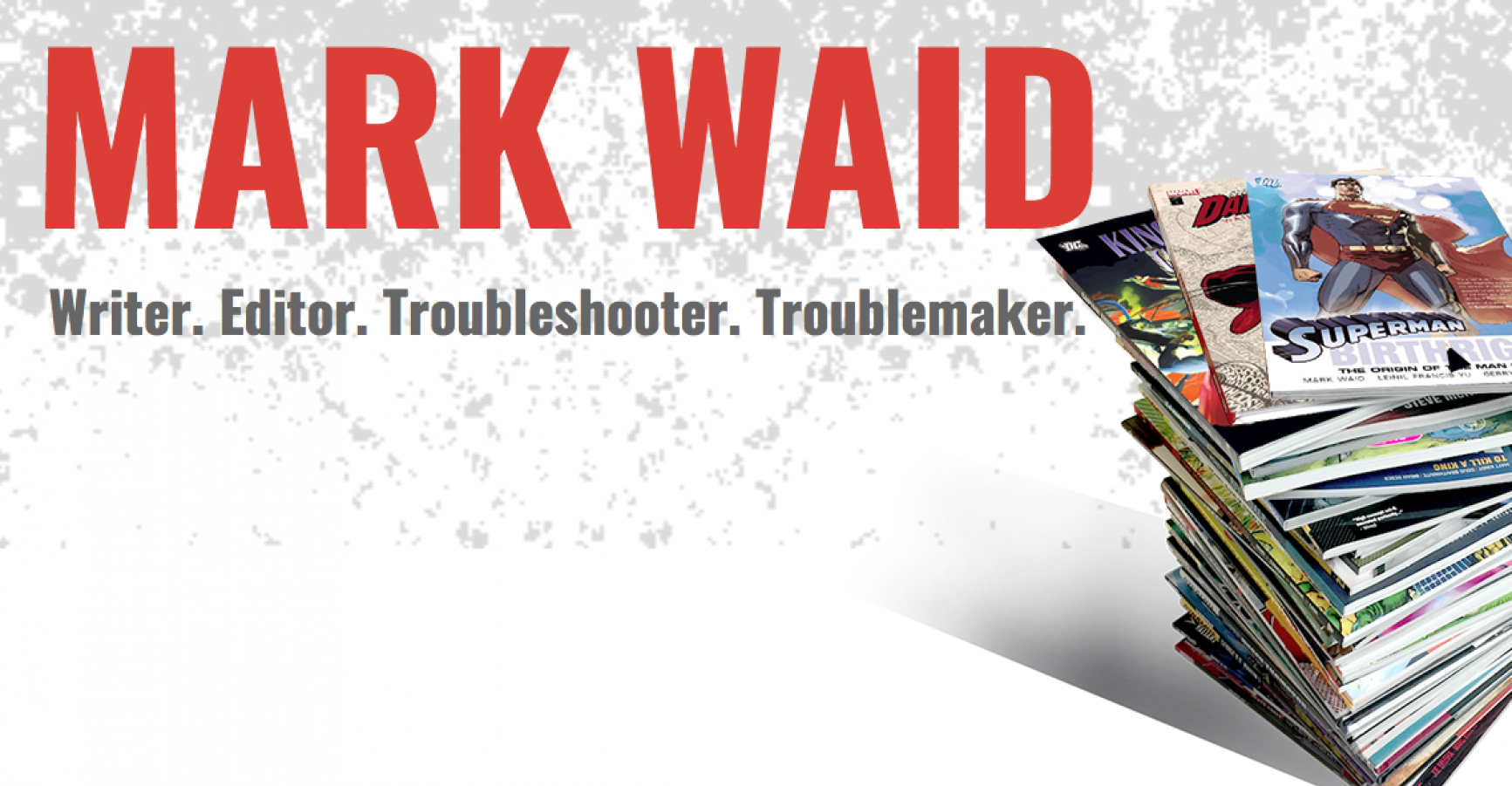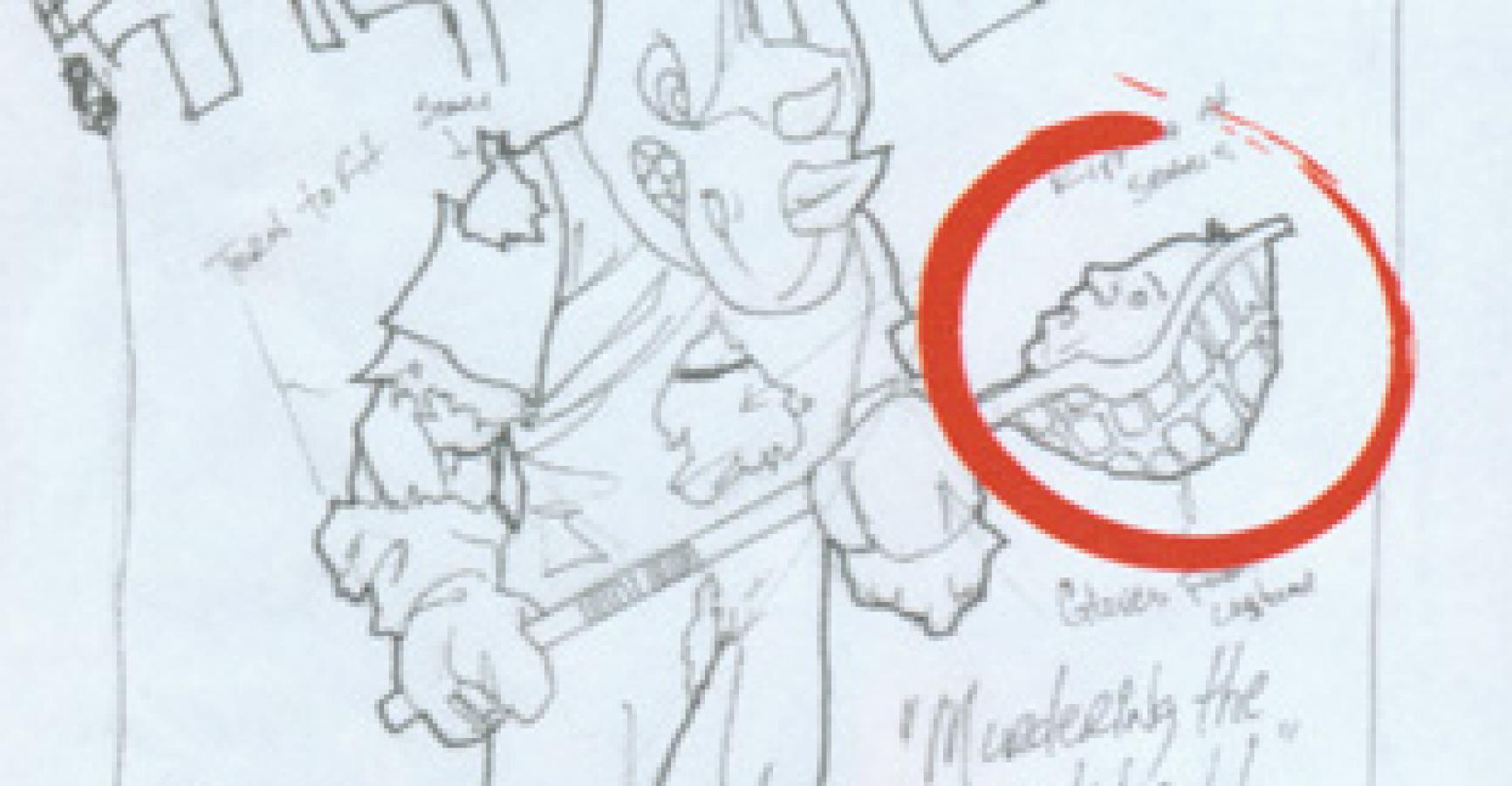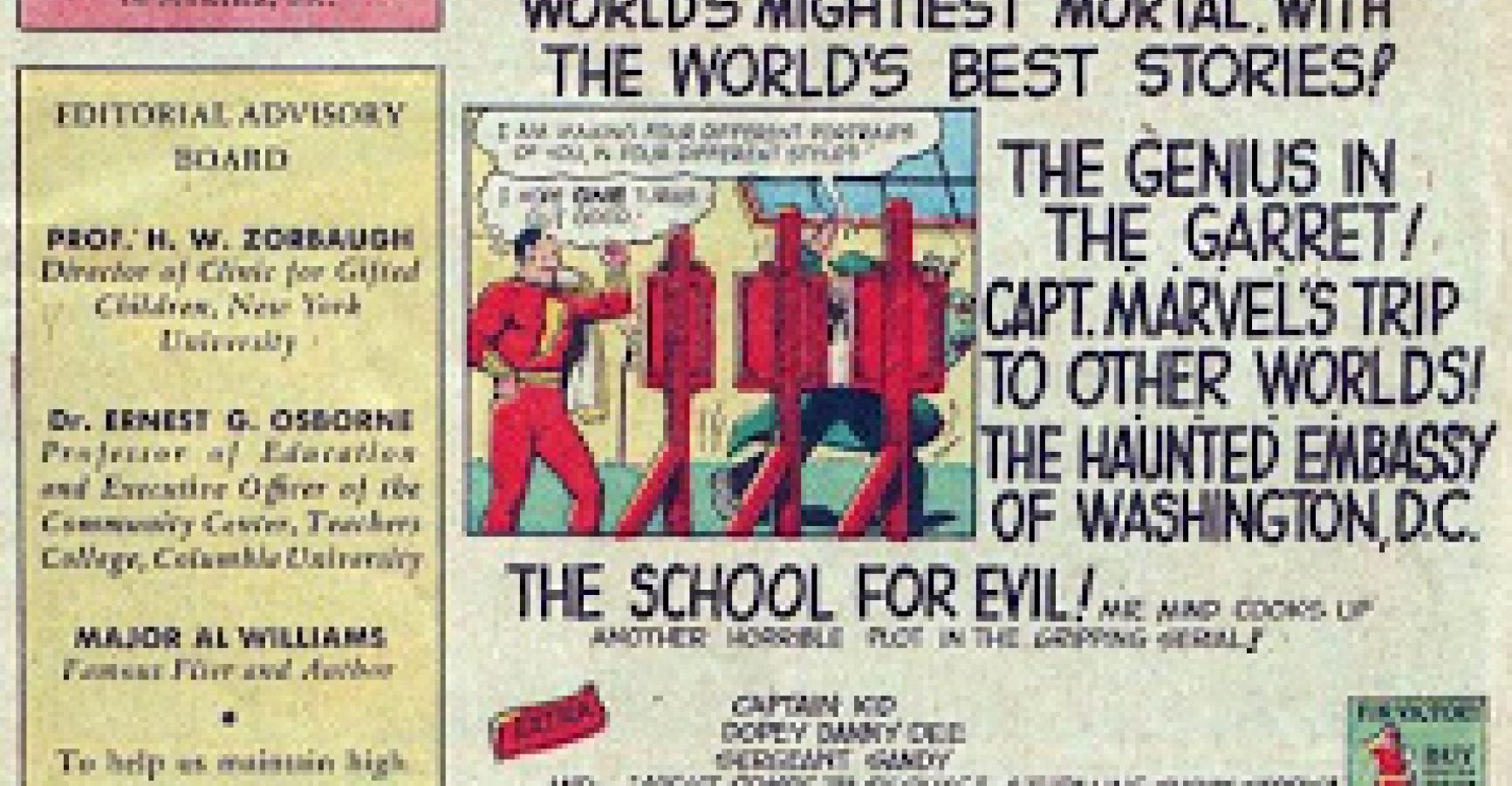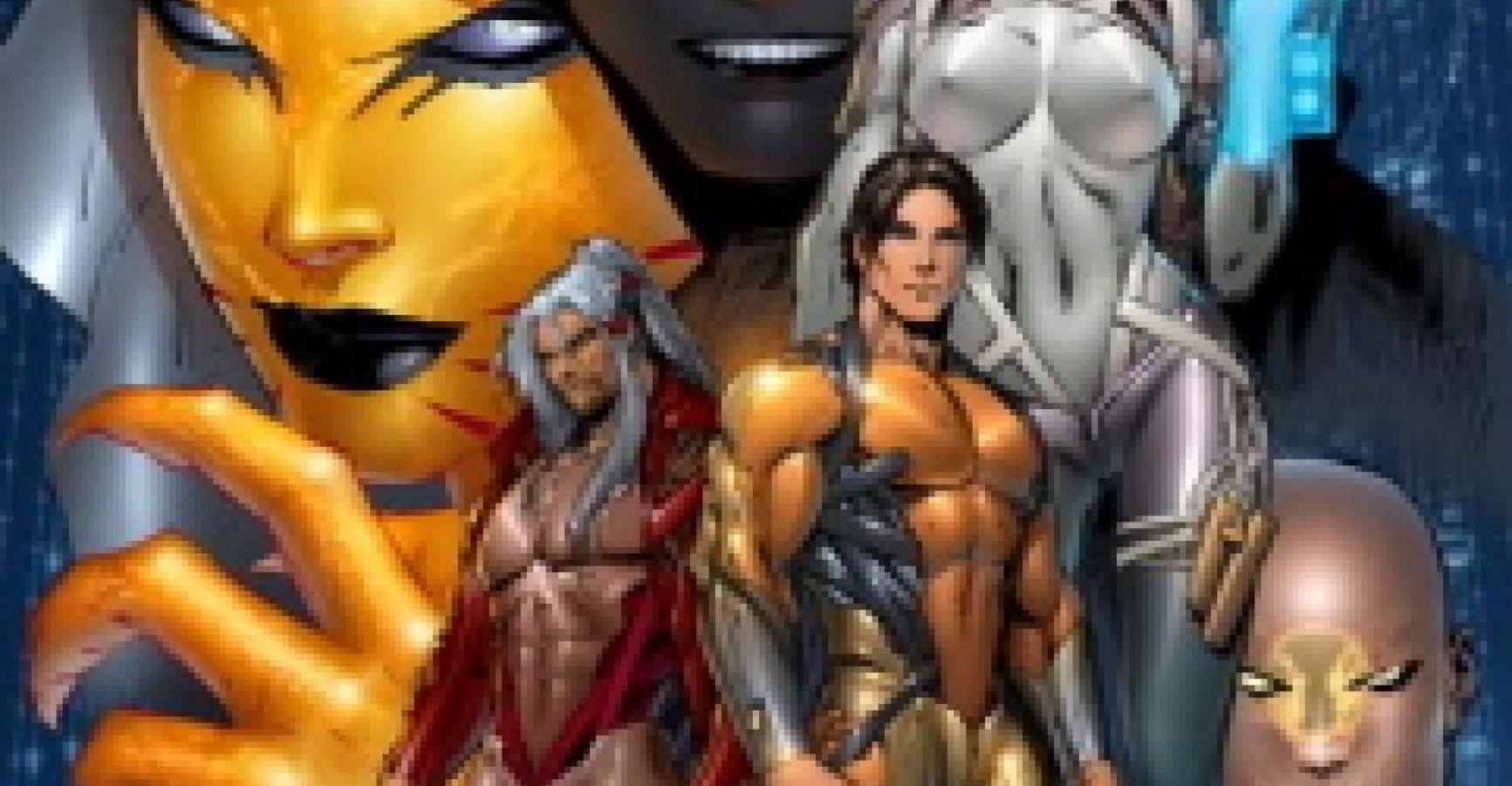Continuing the sample proposal from last week….
THE SERIES
ISSUE
ONE: We introduce Samantha, Wolf, the concept of the Hunter-Killer squad and the Ultra-Sapiens. We OPEN with the home life of Ellis and introduce him and his kindly parents as people we genuinely like and care about. But when Ellis begins to exhibit weird powers, his parents freak. Not at him; at the realization that this is a warning, that powered Ultra-Sapiens are approaching and Ellis is inadvertently “mirroring” their powers.
Ellis is freaking, too—he has no idea what’s going on or that his parents are anything other than what they’ve always seemed. The parents quickly smuggle Ellis out of the house and order him to run as far and as fast as he can…then, in order to cover his escape, they make a stand against a marauding band of Hunter-Killers, led by Samantha, who hit the house like a tornado.
Turns out Mom and Dad are long-escaped Ultra-Sapiens who have been keeping their background secret from their son—and they won’t go down without a fight. Mom sacrifices herself, Dad goes down in battle, much action, much mayhem—and then it’s complicated by the reveal that Ellis refused to abandon his folks and doubled back to the battleground.
Ellis’ mirroring powers kick in hard, he thinks he’s saving his father—but then Dad turns on him. Better Ellis is dead, he says, than kidnapped and dissected by these monsters. Ellis is forced to kill his father in self-defense, and Samantha and her team scoops Ellis up. Issue one ends with Ellis’ parents dead after having been revealed to Ellis as Not At All What He Thought They Were; Ellis’s home and life utterly obliterated; Samantha taking him into the H-K program; and Wolf on their trail.
ISSUE TWO: More background on the Ultra Sapiens program is revealed in this issue—a little more “origin material” without giving away too much or revealing too many allegiances.
On their way back to headquarters, Ellis begins to manifest a new power. The agents assume he’s trying to escape and they move into attack-ready mode despite his protests, but it’s Samantha who realizes the significance of his power flare-up. Ellis isn’t trying to escape—what this means is that there’s another Ultra-Sapien in proximity! Sam gets a sitrep and realizes the Ultra-Sapien is way high atop their Most Wanted (and Best Hidden) List and that he’s a clear and imminent danger to his surroundings. Sam makes the hard call that there’s no time to ease Ellis into this world or “train” him—even if they’ve got a read on the rogue Ultra, by the time they get Ellis to HQ and double back without him, the trail will be cold. No, they’ve got to bring Ellis into this and hope he lives.
With Wolf still secretly trailing them (staying far enough back not to have his powers replicated by Ellis, a sure tell of his presence), the team finds the rogue Ultra. By issue’s end, Ellis has been separated from Sam and the others and is facing this guy alone—or, rather, with Wolf now reluctantly at his side (Wolf still can’t risk Ellis being captured or killed, not until he knows more about the kid.)
Note also: this issue will detail Samantha’s predicament—that the power in her weapons is actually bio-energy she herself radiates, energy for which the weapons allow safe release.
ISSUE THREE: Ellis and Wolf against the Ultra in a battle that will form the foundation of their future friendship. On the one hand, Ellis is distrustful of Wolf since he still doesn’t quite know what Wolf had to do with his parents’ deaths; on the other hand, through the action of battle, both Ellis and Wolf inadvertently demonstrate to one another how unshakeable their moral codes are, which will be a huge point of commonality between them.
Once Sam and her crew reunite with Ellis (Wolf having vanished again), they take him to Headquarters and we see the operation in action. More secrets of the Hunter-Killer program revealed: first, the headquarters doesn’t technically “exist” geographically—it’s a locale imagined by and carved out of dimensional space by The Architect, one of the Ultras who’s been co-opted by the H-K program. It’s oversimple to say that the HQ exists “in his head”; it’s more that the Architect is a quirky but insanely powerful telekinetic who can link you to a dimension in which nothing exists except what he creates mentally out of thin air. So long as the Architect is on our side, it’s the safest place for the H-K program to house itself since it cannot be accessed or even located by potential enemies. One of the drawbacks of the place is that the look and details of it tend to shift and change whenever the Architect gets a new notion or idea (meaning everyone on-site hates the day each month when his subscription copy of Better Homes & Gardens shows up).
Others introduced are Stalker, who (up until Ellis’s arrival) has been the H-Ks’ primary Ultra Sapiens tracker, and Cloaker, the single most important field agent in any mission because he has the mental power to fool observers into seeing the agents however he wants them to be seen—as Asian tourists, as a visiting swim team, as anything but Threatening Guys With Guns. Cloaker’s weird and a bit slimy—Steve Buscemi-ish—but everyone’s always nicest to him because he has the power to make bystanders “see” you in your underwear.
Ellis—who, remember, is still reeling in shock from everything that went down in issue one—gets the tour but is uneasy. He pretends to go along with Sam and the program for now, but by issue’s end, we realize that he’s keeping to himself some serious reservations and suspicions about this whole operation. He trusts no one except, potentially, Wolf—who has proven to be the only one in Ellis’s world now who is straight up and is exactly who he says he is, something not even Ellis’s parents could have claimed.
ISSUE FOUR: Take the recent “Iraq/Haliburton/oil field contracts” scandal-scenario and replaced “oil fields” with “superhumans.” The U.S. Government has uncovered the existence of a small band of Ultra-Sapiens in a war-torn, third-world country, and a high-level administration official has “arranged” for his corporation to secretly take “possession” of them for the corporation’s own ends. Ellis and Cole must get into the war zone and deal these Ultra-Sapiens out somehow before this happens.
ISSUE FIVE: An Ultra-Sapien who’s a “telemech”—able to read thoughts and transmit them as electrical impulses—is on the loose, and Ellis and Cole are dispatched to deal with him. Once they confront him, they realize he’s not a hardass criminal; he’s a poor bastard whose life was ruined by the Project, and he wants revenge. He’s gathered enough information to blow the Hunter-Killer program wide open and is about to feed it through every fax machine and modem line on Earth in one big burst of information. Do Ellis and Wolf take him down with extreme prejudice for the greater good?
ISSUE SIX: Ellis and Wolf have to shut down a full-scale riot at a prison nicknamed “Area 52″—a virtually unknown Guantanamo Bay-style facility where captured Ultra-Sapiens believed to be “hostile to the U.S.” are held and tortured in utter violation of anything resembling civil rights.
Further adventures will continue in this vein. Every mission will have a hard, character-revelatory moral choice at its center. And as we barrel into the back half of the year, Morningfrost’s relationship with the Hunter-Killers will become more antagonistic, leading to an all-out war between the H-Ks and their leader.
*************
There. A little wordy, maybe, and we changed a lot of the details as I wrote the actual series, but in answer to numerous requests–a sample Proposal.
Next: The Job of an Editor



